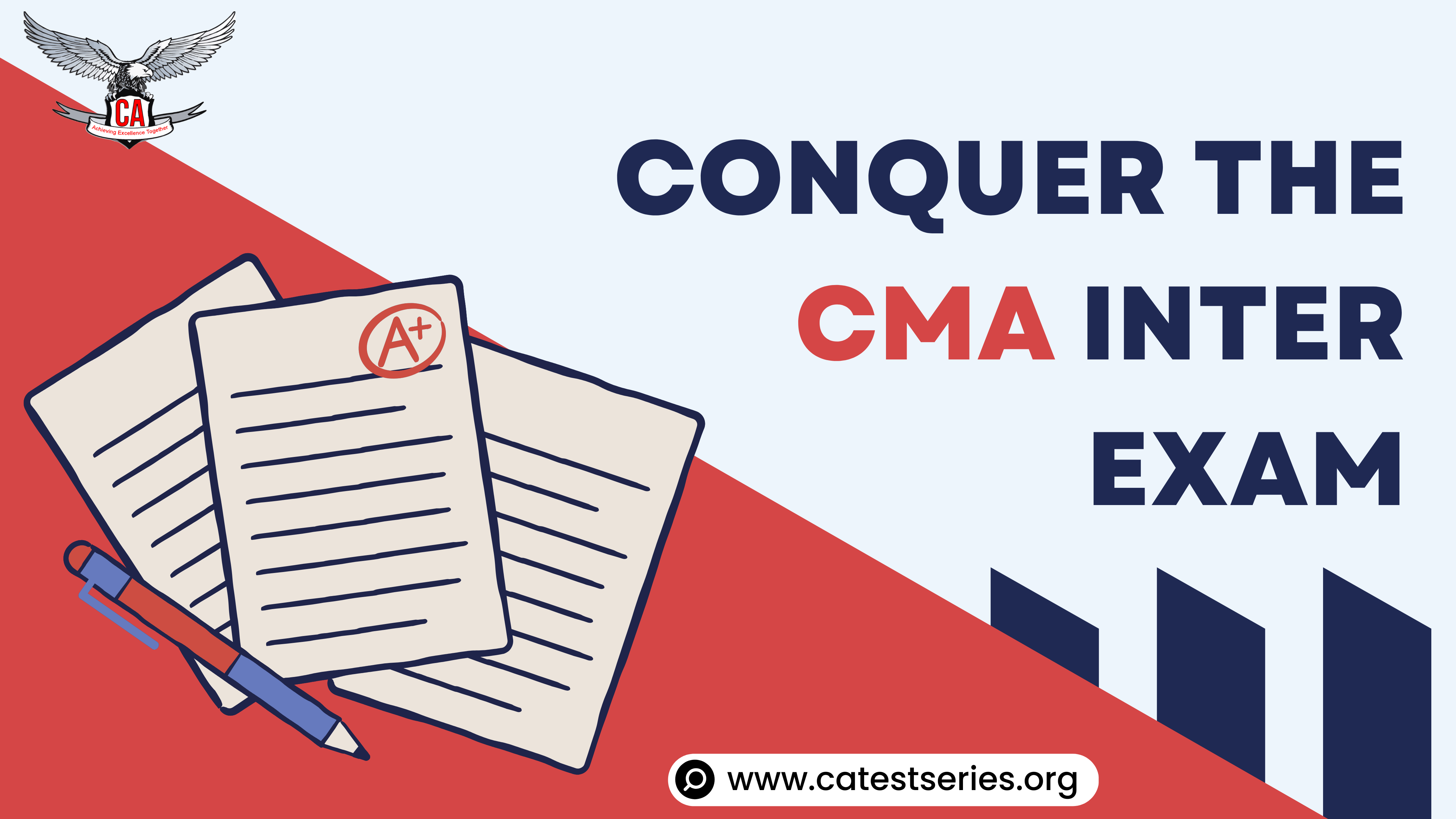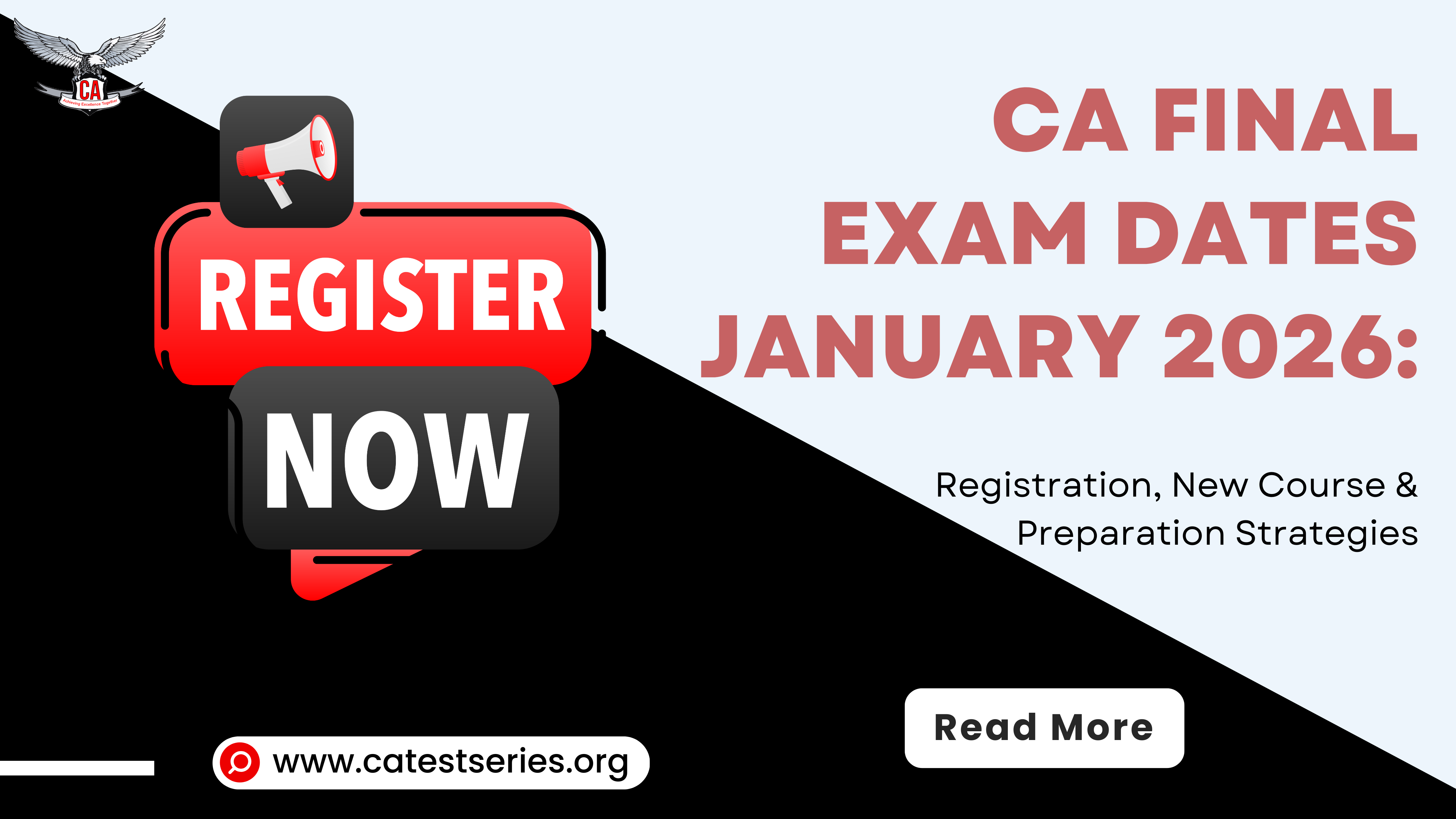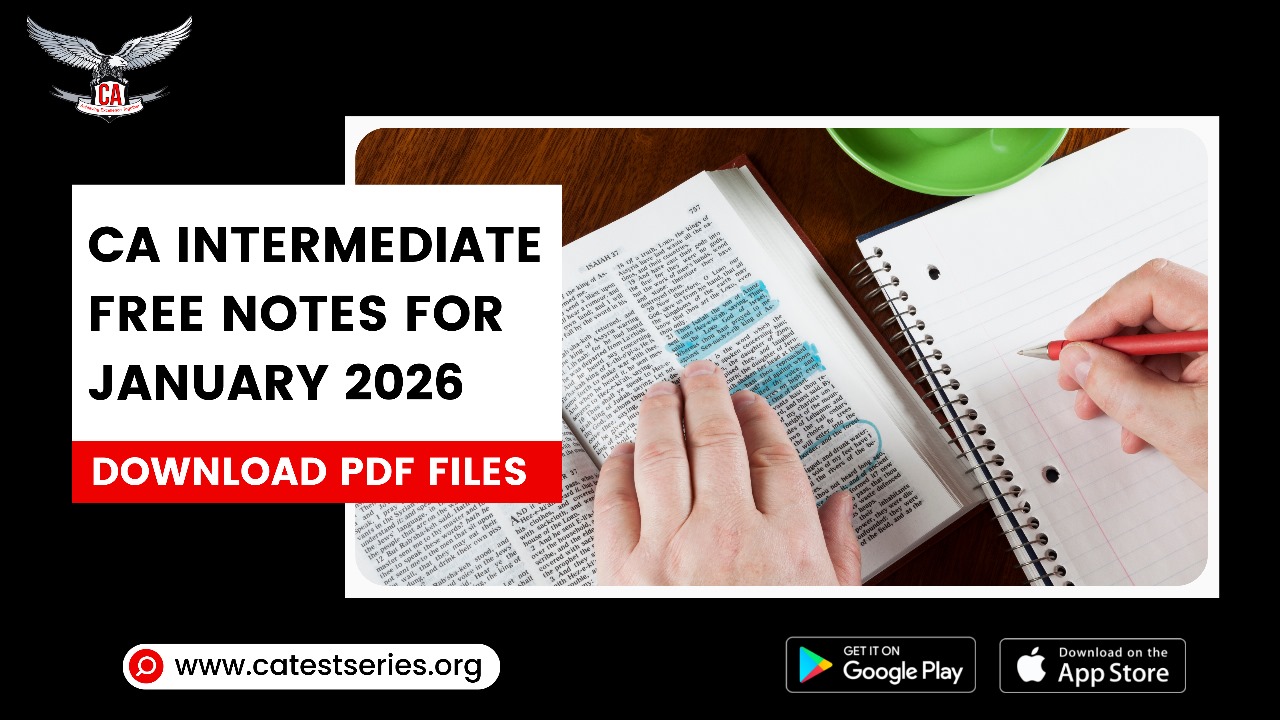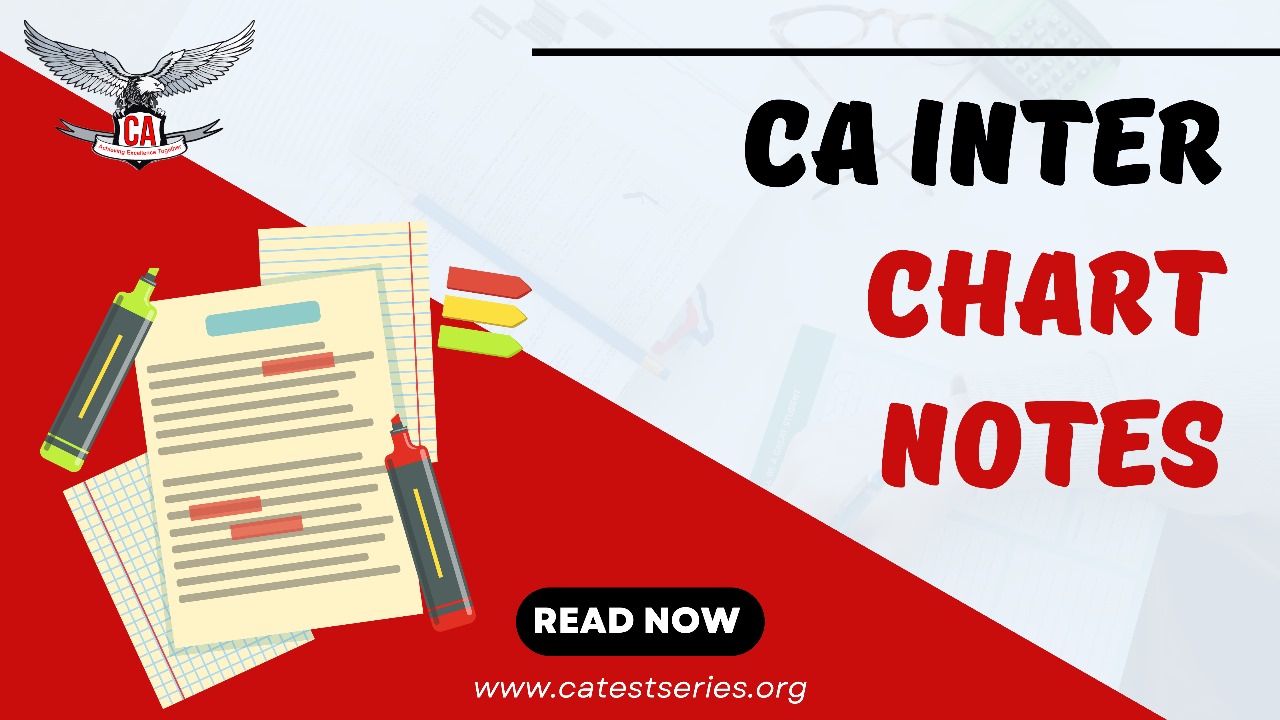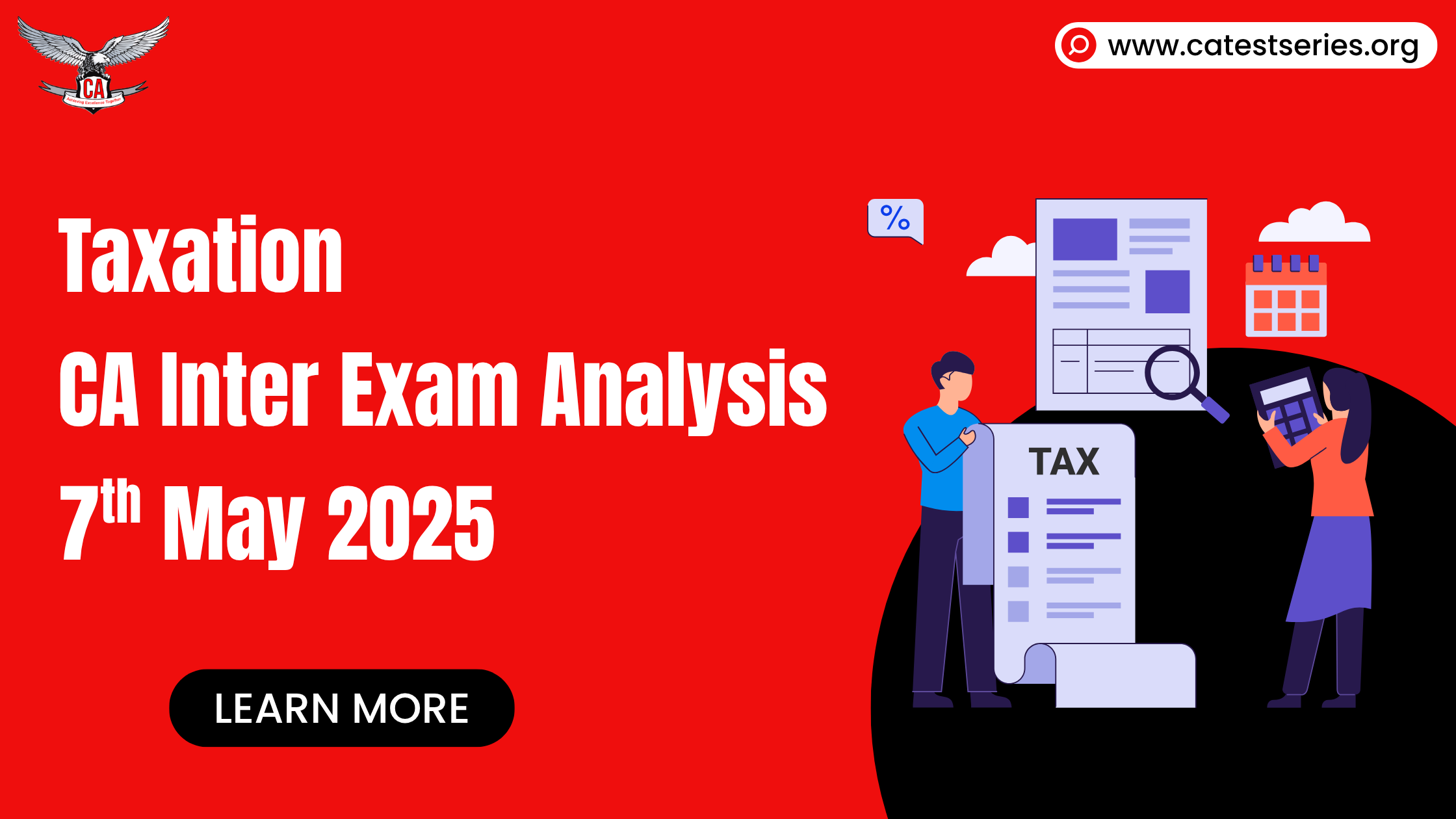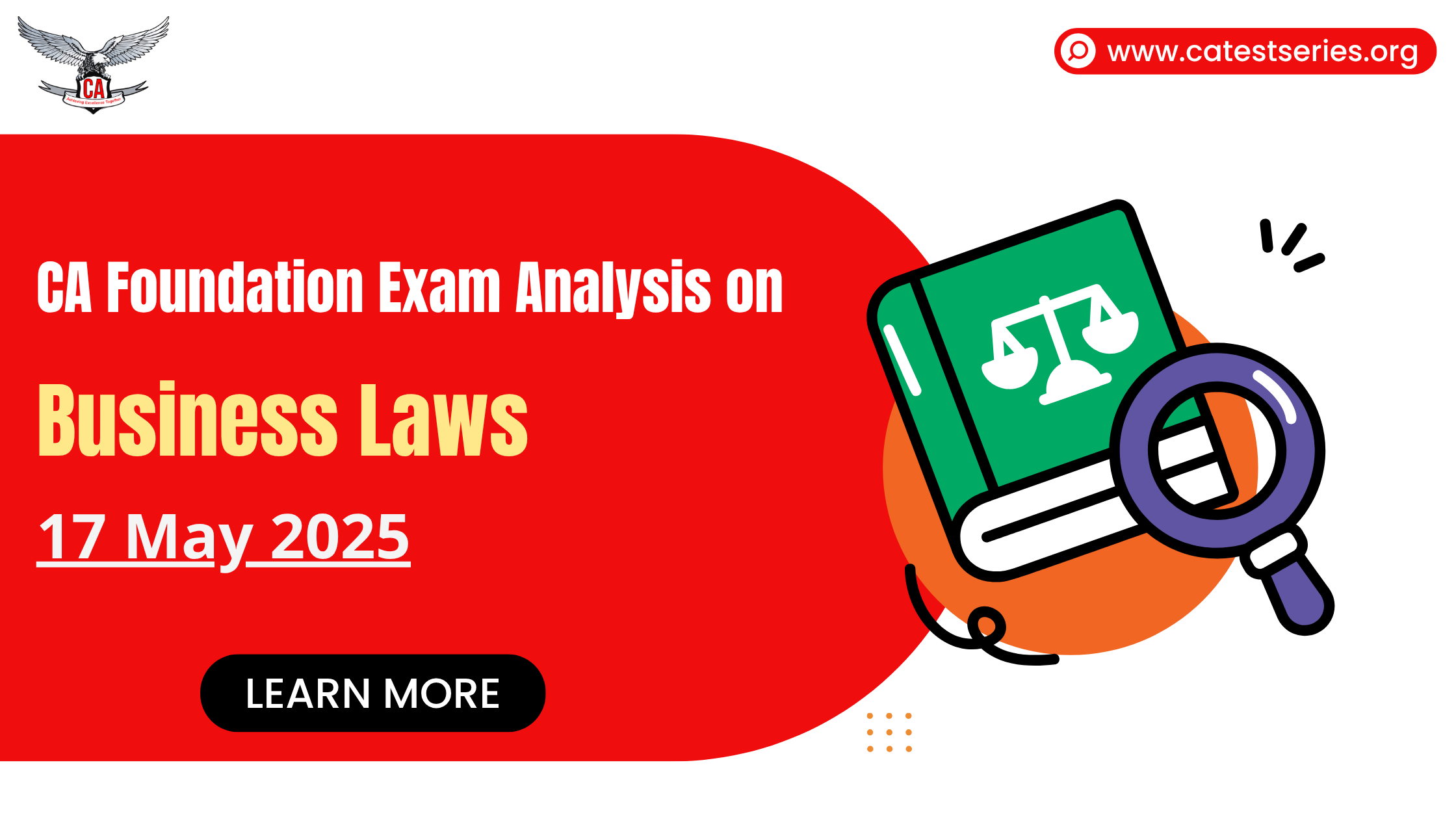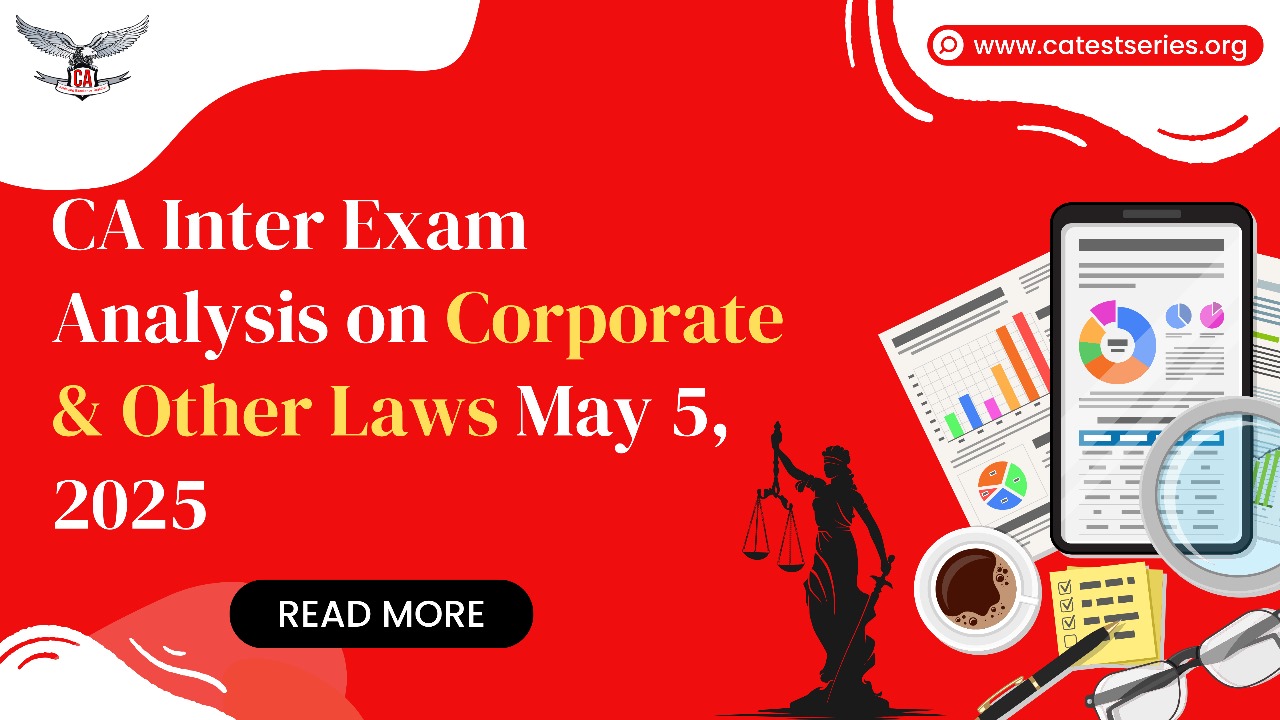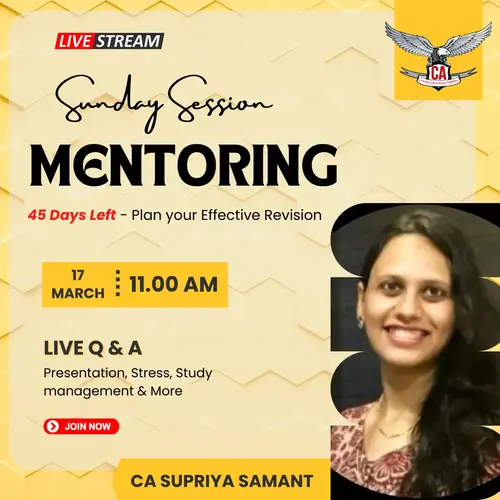CMA Intermediate Exam ICMAI | Exam Pattern | Registration Date | Passing Criteria | Syllabus
Conquer the CMA Intermediate Exam: A Breakdown of the Syllabus
The Intermediate stage of CMA is an important second stage in the journey of becoming a certified Cost and Management Accountant, which gives students the technical skills and analytical power needed for financial and strategic roles. This level reinforces the basic curriculum of the CMA Foundation and covers a diverse range of subjects critical to sound financial decision-making and management. There are two groups in the syllabus, and each group has four different papers–it covers financial accounting, taxation, corporate laws, cost management, operational strategy, etc. The structure of the CMA Inter syllabus ensures that CMA has all-rounder experts focusing on establishing particular abilities and finally preparing them to meet the complex requirements of the finance and management sectors.
Familiarizing themselves with the makeup and sharing of each subject area is essential for students hoping to be successful on the exam as well as in their future role. In this guide, we have segregated the subjects to provide students an overview of each paper, along with what are the important aspects in each to prepare the roadmap for success in their papers.
More about the CMA Inter Subjects Group 1 & Group- 2
The syllabus is divided into two groups, and each group contains a total of four papers. Now, what are these papers about in detail...
Group 1
- Paper 6: Law and Ethics (Commercial laws, industrial laws, Corporate Law, and Business ethics)
- Paper 7: Direct Tax (Income tax basics, heads of income, tax management procedures)
- Paper 8: Cost Accounting (Cost ascertainment, costing methods, and cost accounting techniques)
Group 2
- Paper 9: Operations Manager & Strategic Management (Operations Planning, Production Control, Project management, Strategically analysis and Formulation)
- Paper 10: Cost and Management Accounting & Financial Management (Cost & management accounting concepts, budgeting financial analysis, capital budgeting)
- Paper 11: Indirect Taxation (Goods and Services Tax GST and some parts of Customs laws)
- Paper 12: Company Accounts & Audit (Issue of shares and debentures, Financial Reporting, Cash flow statements, Auditing)
Exam Pattern and Resources
To ensure you are exam-ready, practice using the official test format published by ICMAI on their website. This should cover information on the number of papers, types of questions in each paper, evaluation system followed (Objective or Subjective), duration of examination, medium and no negative marking.
The CMA Inter exam is a difficult journey requiring systematic and rigorous planning, a comprehensive grasp of the syllabus, and execution discipline in your study schedules. CMA is a global qualification that has an Intermediate Level, which contributes significantly to your ability in the areas you need for CMA, like management accounting, taxation, cost accounting, financial management, etc. After reading this guidebook, you will know the multiple strategies to prepare, as well as resources and tips for acing your CMA intermediate level exam.
CMA Intermediate exam is considered to be the stepping stone for students preparing their career in Management Accounting. An advanced knowledge of various subjects is needed for this level, which consists of two groups — each with four papers. Here is the CMA Intermediate syllabus which will give you an idea of each paper and chapters involved to study in-depth.
CMA Intermediate Group 1
Paper 5: Financial Accounting
It is introductory in nature regarding the concepts and principles related to accounting. The syllabus is categorized into four broad sections, starting with Accounting Basics (25%), where students will be familiar with basic accounting terms and usages, the scope and importance of accounting, as well as the accounting principles in relation to a few transactions. The second part, Financial Position and Performance (40%) deals with account preparation for profit-oriented and not-for-profit organizations, as well as partnerships and incomplete records. (1) Introduction to Law and Legal System in India 5%. (2) Indian Contracts Act, 1872 10% (3) Sale of Goods Act, 1930 5% (4) Negotiable Instruments Act, 1881 (20% — goes deeper into niche accounts) Lastly, Accounting in a Computerized Environment and Accounting Standards with an emphasis on computerized accounting systems (in terms of both use and design), including the hierarchy of accounts to be set up, 15%
Paper 6 - Laws, Ethics and Governance
Great overview of legal & and ethical issues facing the corporate world that provides students with an insight into the Law. It consists of Commercial Laws (30%), including acts of India, i.e., Contract Act, Sale of Goods Act and Negotiable Instruments Act, along with LLP Acy. Industrial Laws (25 %) – The part comprises the workplace-oriented laws, Factory Act, Payment of Gratuity Act, and Minimum Wages Act. Corporate Law (35%): Rooted in the Companies Act, it studies company formation and promotion as well as director responsibilities. Lastly, Ethics (10%) looks at the principles that govern professional behaviour — accountability, honesty and what ethical conduct means for business.
Paper 7: Direct Taxation
This course offers insight into the Indian tax system with a focus on income tax. Income Tax Act Basis (10%) is an overview of the Income Tax Act in which students learn about capital & and revenue transactions, definitions, etc. Part B: Heads of income and computation of total income and tax liability (70%) covers aspects ranging from capital gains, business incomes to special provisions applicable to corporate taxpayers. The last part - Tax Management, Administrative Procedures and ICDS (20%) details tax administration & and provides students guidelines for income computation & and disclosure standards.
Paper 8: Cost Accounting
Paper 8 was added to develop knowledge of finance concerning cost decisions in the future. Cost Accounting Fundamentals (40%) covers the cost elements, various cost classifications and the basic Cost Accounting Standards (CAS 1 to CAS 24). It includes the Methods of Costing (30%), which covers costing methods such as job costing, process costing, and operating costing. Cost Accounting Techniques (30%) This section covers basic techniques like marginal costing, variance analysis and budgetary control.
CMA Intermediate Group 2
Paper 9: Operations and Strategic Management
Operations and strategic planning are key components to the efficiency and competitiveness of organizations; these are covered in this paper. Operations Management (70%) — students learn about production planning, project management, quality control and boosting productivity. The Strategic Management (30%) part of the course is designed to aid you in relating strategic analysis, planning, and application for long-term organizational success.
PAPER 10: COST ACCOUNTING, MANAGEMENT CONTROLLING IN ADDITION FINANCIAL MANAGEMENT
This paper is perfectly divided between cost and management accounting and financial management, focusing purely on financial decision-making. In Cost and Management Accounting (50%), students are exposed to tools that assist with decision-making, budgeting, variance analysis, and learning curves. The course in Financial Management (50%) helps get a closer look into working capital and theories relating to capital structure decisions, dividend decisions and capital budgeting.
Paper 11: Indirect Taxation
This paper will discuss indirect taxation in detail, which is also commonly referred to as GST and customs law. The GST Section (80%) includes the basics of things like tax collection, place and value of supply, input tax credit and registration details. Customs Law (20%) covers the topics of customs duty, customs procedures for plaintiff and defendant individuals, and duties under concessional import rules.
Paper 12: Corporate Accounts and Audits
Company accounts and Auditing is the last of the CMA Intermediate papers. Accounts of Joint Stock Companies (50%): Preparation of financial statements of companies including Banking, Insurance, etc. It also includes the relevant accounting standards (AS-11, 12, 15, 16, 17, 18, 19) such as Share and Debenture Accounting & Cash Flow Statement. Auditing (50%) — Fundamentals of Auditing and statutory compliance as per the Companies Act, ensuring that students grasp audit basics and mechanisms.
Passed the Test: Why CMA Certification Matters
In the professional world, CMA certification is one of a kind and has a lot to offer.
- Better Career Opportunities: Companies hire CMAs because they have a unique ability in the area of financial management and strategic decision-making.
- Enhanced Salary Prospects: The CMA certification can ramp up your salary bunches.
- Worldwide Recognition: With a CMA, you can work anywhere in the world.
- Increased Job Security: CMAs enjoy even more job security as they are in high demand.
Stay Consistent and Motivated
Preparing for the CMA is a long game, not a shorter one. It takes time, dedication, and daily practice. While there will be days when the syllabus seems too heavy to bear such moments, knowing what your end goal is important. Studying for long hours can be dull, so it is acceptable to take quick breaks in between. Like joining study groups or forums where you can brainstorm and share your comprehension of the concepts, discuss tough questions, and seek encouragement from other aspirants. There is an active community of CMA studies on platforms like Reddit and LinkedIn that can provide support in terms of resource sharing.

